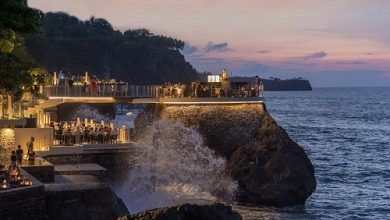
Jakarta’s mini-China
Jakarta : With my son and daughter-in-law busy with their offices from Monday to Friday, I had come prepared to Indonesia to be on my own during the weekdays.
After my arrival in Indonesia I realised that in this nation English is only the script of Bahasa. It is not a part of verbal communication in the country.
While travelling across the English speaking world, Indians are a confident lot and their knowledge of English is of immense help while they are on the move. Nations and places like these where English is not a spoken language, Google Translation on mobile phones has come as big help to the itinerant traveller.







Equipped with a Google Translation enabled mobile phone I have been exploring the nooks and corners of Jakarta. I have been communicating with locals through my wide open smile, thank yous and Google Translation.
In this nation five per cent of the nearly 270 million (27 crore) people are of Chinese origin. Over centuries they have become an intrinsic part of the nation’s social and economic fabric. Although eateries of Chinese cuisine are spread across Jakarta, a large number of Chinese prefer to live in Chinatown, Glodok and Petak Sembilan Market areas of the city.

Began my day with a visit to Wihara Dharma Bhakti, the oldest Chinese temple in Jakarta. Built in the year 1650, this small but beautiful temple in the middle of a bustling neighbourhood is locally known as Kim Tek Ie. It is in Glodok, a walking distance from China Town.
From the temple I walked across to the Petak Semblian Market, also called Kemenangan market.
I strolled into the main street which had many narrow lanes and bylanes on the right. From modern malls and palatial shopping arenas of South and Central Jakarta, I walked straight into the old world charm of the 19th century’s bazaars depicted in Hollywood movies.




Vegetable and fruit shops, fish and chicken vendors, food shacks, grocery stores, shops dealing in high quality dry fruits and spices to ready to cook food and ingredients were vying for attention. Red tiled roof double storey homes were the norm in this colony. Lanes and bylanes were dealing in a large variety of prawns, fish as well as live frogs, anacondas, turtle, crabs and fish. Non vegetarian options were limitless. Vendors were happy to share, explain and demonstrate the handling of these creatures. A routine it was for them. But to a guy like me some of their actions were just too difficult to observe.
From here one moved on to a single lane food street of more than 50 shops each of them with seating facility. All eateries were run by the Chinese and seemed to be catering only to them since all of them were serving pork based cuisine. Majority of Indonesians, being Muslim, do not eat pork and stay away from this street.
To cap this exploration of Jakarta’s mini-China, on the left of the street was the most modern symbol of Chinese success saga in Jakarta—China Town. It is a multi-storey residential apartment complex with a modern mall on ground floor.




